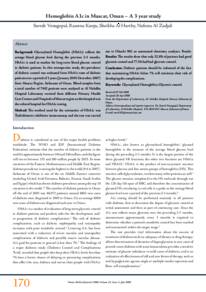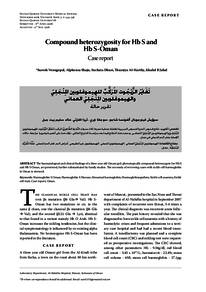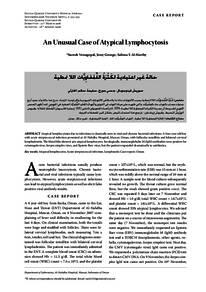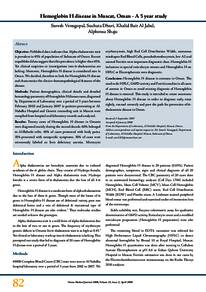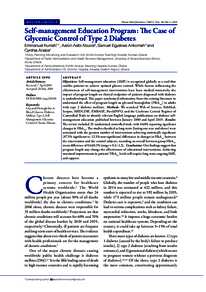Document
Hemoglobin A1c in Muscat, Oman : a 3 year study.
Contributors
Publisher
Oman Medical Specialty Board.
Gregorian
2008-07
Language
English
English abstract
Background: Glycosylated Hemoglobin (HbA1c) reflects the
average blood glucose level during the previous 2-3 months.
HbA1c is used as marker for long term blood glucose control
in diabetic patients. In this retrospective study, the prevalence
of diabetic control was evaluated from HbA1c tests of diabetic
patients over a period of 3 years (January 2005-December 2007)
from Muscat Region, Sultanate of Oman. Blood samples from
a total number of 7442 patients were analysed at Al Nahdha
Hospital Laboratory received from different Primary Health
Care Centers and Hospitals of Muscat region as this hospital was
the referral hospital for HbA1c testing.
Method: The method used for the estimation of HbA1c was
Turbidimetric inhibition immunoassay and the test was carried
out in Hitachi 902 an automated chemistry analyzer. Result:
Results: The results show that only 22.8% of patients had good
glycemic control and 77.2% had bad glycemic control.
Conclusion: Diabetic patients should be informed of the fact
that maintaining HbA1c below 7% will minimize their risk of
developing the complications.
Member of
Resource URL
Citation
Venugopal, Suresh, Kunju, Raseena, Sheikha, Al-Harthyiah, & Al-Zadjaliyah, Nafeesa. (2008) .Hemoglobin A1c in Muscat, Oman : a 3 year study. Oman Medical Journal, 23 (3), 170-172.
Category
Journal articles

